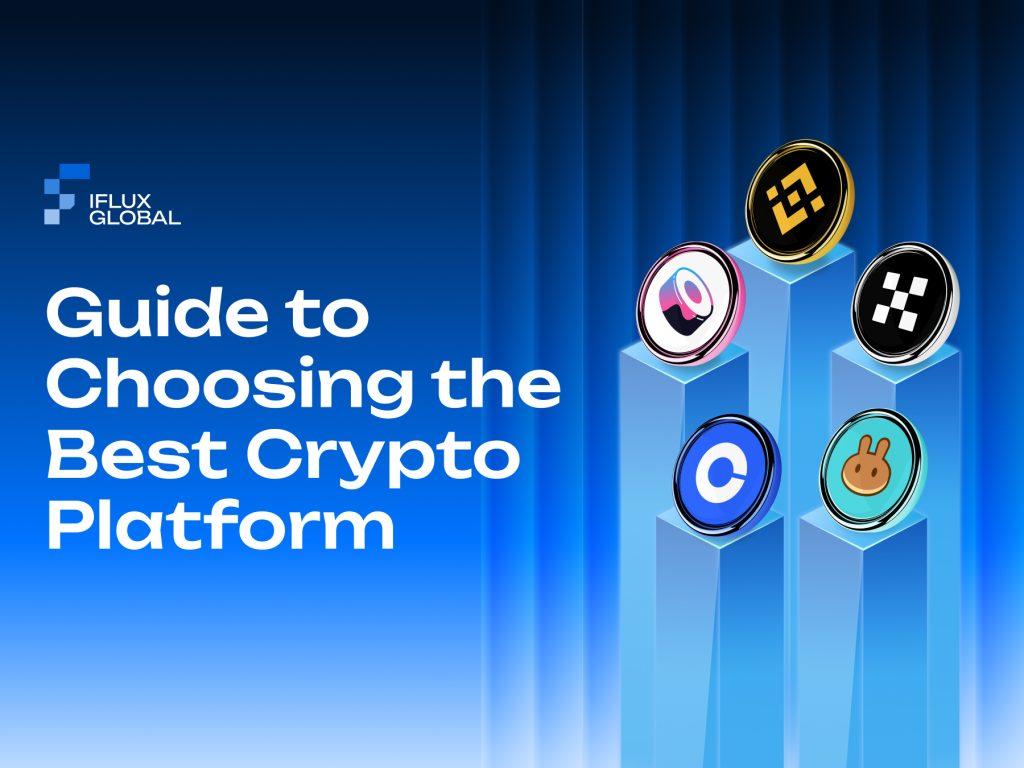DePin is widely spread in the crypto market recently with many people believing it would lead the 2024 – 2025 bull run. So what is DePIN exactly?
DePIN focuses on distributing and decentralizing traditional physical infrastructure services, enhancing security, scalability, and efficiency. With its vast potential for widespread adoption, DePIN projects offer numerous real-world use cases while leveraging the power of blockchain technology. Let’s dive deeper into this emerging trend to better understand: What is DePIN?
What is DePIN?
DePIN, or Decentralized Physical Infrastructure Networks, refers to blockchain-based projects that create infrastructure networks, serving as intermediaries between infrastructure providers and customers in need. A well-known comparison is the Uber model, where drivers supply the transportation infrastructure while Uber links them with passengers looking for rides.
Similar to traditional operating models, DePIN projects leverage blockchain technology to enhance transparency and eliminate third-party oversight in transactions between users and providers. This decentralized approach empowers communities to collaboratively manage and govern resources, ensuring that interactions within the network are secure and efficient.
At the time of writing, DePIN’s market value is about $32.5 billion.
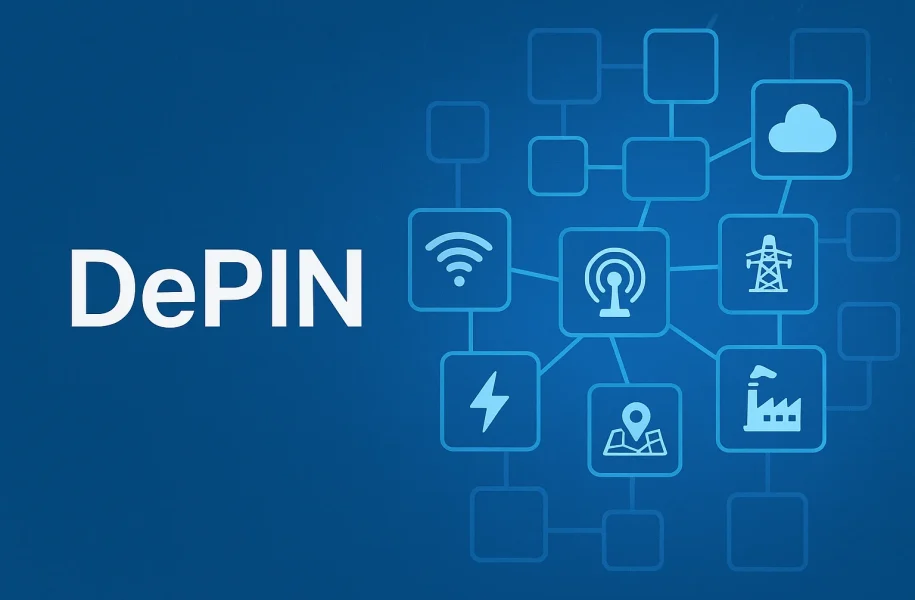
The infrastructure of DePIN breaks down into two types:
- Physical resource networks (PRNs): These DePIN projects hook up hardware stuff like Hotspots for WiFi or 5G, even Drive setups for taxis or cars. What is DePIN if not a way to link real-world gear to a decentralized vibe?
- Digital resource networks (DRNs): These DePIN projects focus on data-related infrastructure, including bandwidth, data storage, and VPN services.
DePin and Sharing economy model: What’s the difference?
The sharing economy model is a system where individuals share access to goods and services, typically facilitated through digital platforms. Platforms like Airbnb and Uber centralize control, often leading to unfair profit distribution while DePIN promotes decentralization and token governance. In a traditional model, increased fees can significantly reduce earnings for providers, as seen with ride-sharing companies raising commission rates.
In contrast, DePIN allows providers to earn tokens for their contributions, which can be converted to cash or used for governance. For instance, in a bike-sharing DePIN model, users can earn tokens for each ride they take, which not only rewards them but also grants them a voice in platform governance. This structure fosters a fairer ecosystem where all participants benefit.
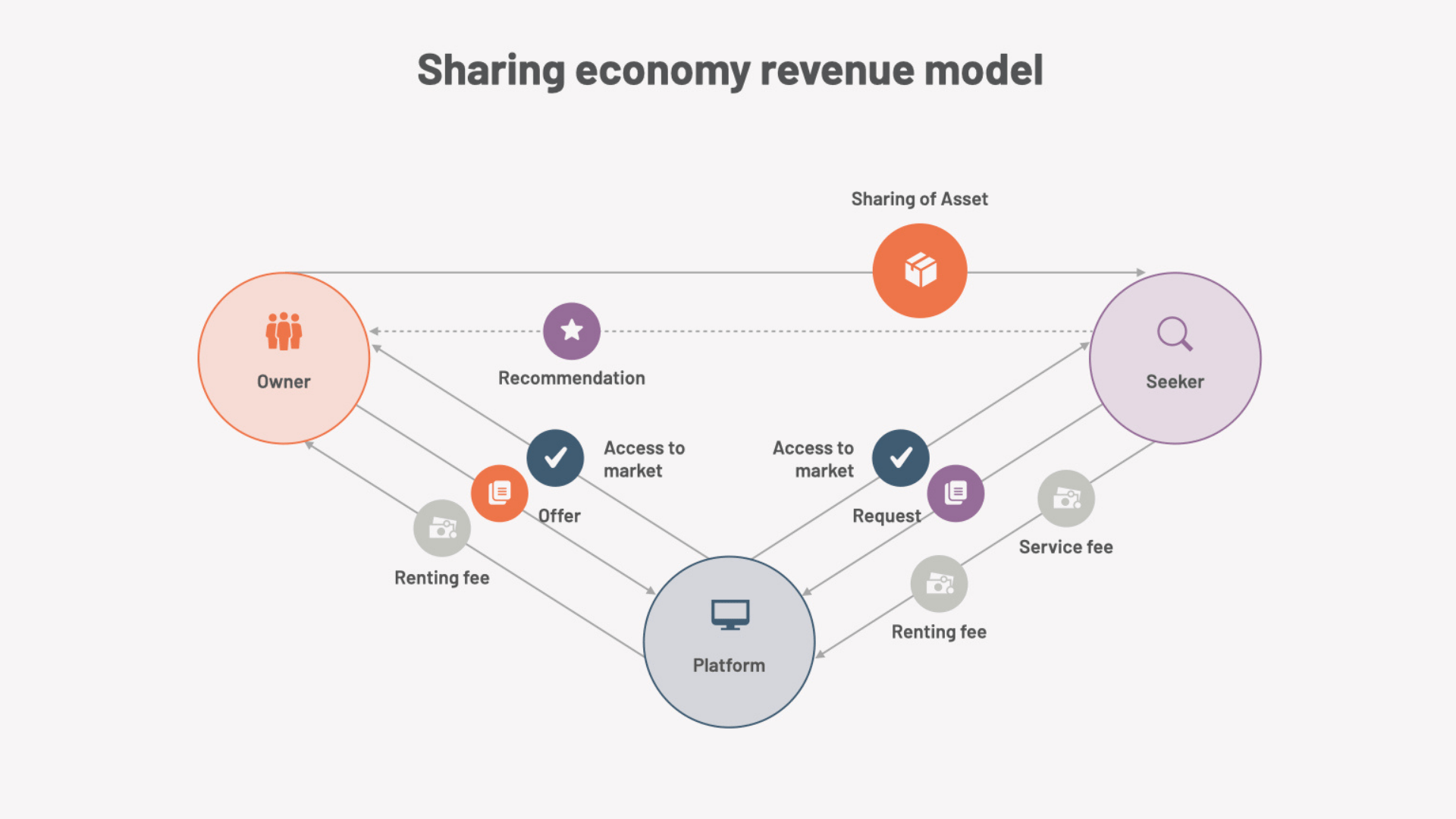
Main components of DePIN
DePIN relies on several key elements that ensure robust, secure management of real-world infrastructure.
- Blockchain technology: Blockchain serves as a secure, transparent ledger for transactions and resource allocations. It ensures that all actions are verifiable and tamper-proof, building trust among participants. Platforms like Ethereum and Solana provide the necessary flexibility for various DePIN projects.
- Smart contracts: Smart contracts are automated agreements that streamline processes within DePIN. They manage resources and execute transactions without intermediaries, streamlining operations and reducing costs. For example, in decentralized energy networks, they adjust token rewards based on real-time contributions.
- Tokenization: Tokenization converts physical assets into digital tokens that represent ownership or access rights. Participants earn tokens by contributing resources like bandwidth or storage, which can be traded or used within the network. This creates a self-sustaining economy that encourages participation and supports the network’s growth.
These components work together to create a dynamic framework for decentralized infrastructure, allowing communities to manage resources effectively while promoting transparency and security.
How does DePIN work?
DePIN operates by linking real-world assets, like routers or energy devices, to a blockchain-based network. Users contribute these resources and earn cryptocurrency rewards, creating a peer-to-peer system that grows through community effort rather than centralized control. Smart contracts manage tasks, verify contributions, and distribute rewards transparently, ensuring efficiency and security.
The process starts when participants add their hardware or data to the network, which is then coordinated by smart contracts to optimize performance across all nodes. For instance, a user providing bandwidth receives tokens based on usage, while the system scales dynamically to meet demand, avoiding single-point failures.
This decentralized approach allows DePIN to expand collaboratively, with users retaining control over their contributions, making it a resilient and user-driven infrastructure. Understanding what is DePIN reveals its potential to reshape the way we interact with physical resources in a decentralized manner.
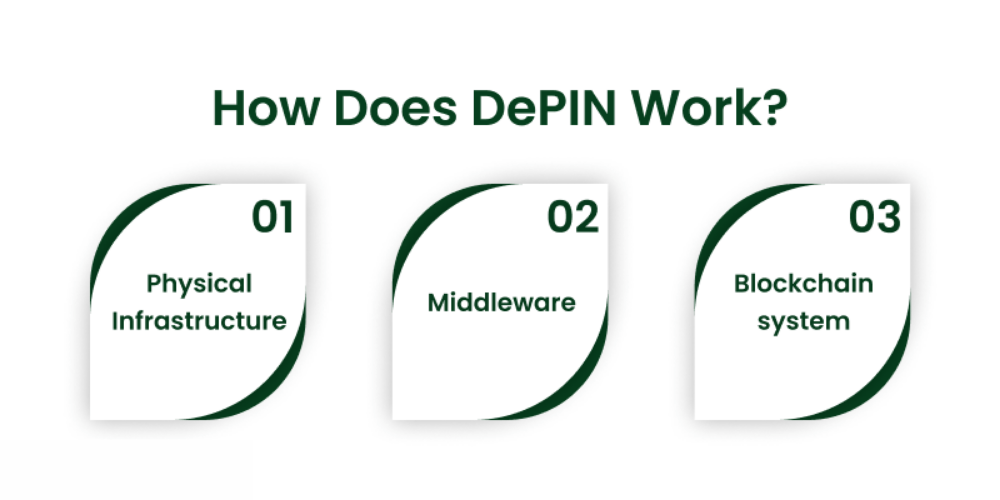
DePin’s use cases
Decentralized Physical Infrastructure Networks are revolutionizing industries with practical applications.
Smart agriculture
Farmers deploy affordable sensors to track soil and weather, sharing data on a blockchain to earn rewards while improving crop yields. This fosters a sustainable, community-driven farming network.
Decentralized transportation
DePIN can power shared mobility solutions like bike-sharing or electric vehicle charging networks while earning tokens for eco-friendly mobility. It reduces dependence on big providers, making transport more accessible.
Healthcare
DePIN powers wearable devices that securely collect patient data, like heart rates, enhancing remote care. Contributors earn rewards, building a global health network that’s both private and innovative.
Smart city
DePIN enhances urban life by managing traffic with decentralized sensors that share real-time data for better flow and parking, rewarding contributors with tokens. It also supports energy-efficient grids and waste monitoring.

Advantages and disadvantages of DePIN
Advantages:
- Decentralization: Uses blockchain for transparent, user-controlled transactions.
- Fairness: Community-driven rewards and decisions ensure equity.
- Profit opportunities: Allows monetization of real-world assets like WiFi or storage.
- Scalability: Connects Web3 to physical infrastructure for broader reach.
Disadvantages:
- Limited projects: Only around 60 projects with $11 billion value, indicating slow growth.
- Adoption barriers: Complex blockchain knowledge hinders user participation.
- Security risks: Smart contracts and hardware issues pose reliability threats.
The future of DePIN
According to Messari, DePIN made significant strides in 2023, attracting $1 billion in investments, with Filecoin and Helium leading by raising $500 million. Though this is less than sectors like Gaming or Lending, DePIN is steadily gaining ground in the crypto market.
During the recent downtrend, while NFT and DEX projects saw revenue drops of 70 – 75%, DePIN projects only declined by 20 – 60%, showing strong resilience in a bear market.
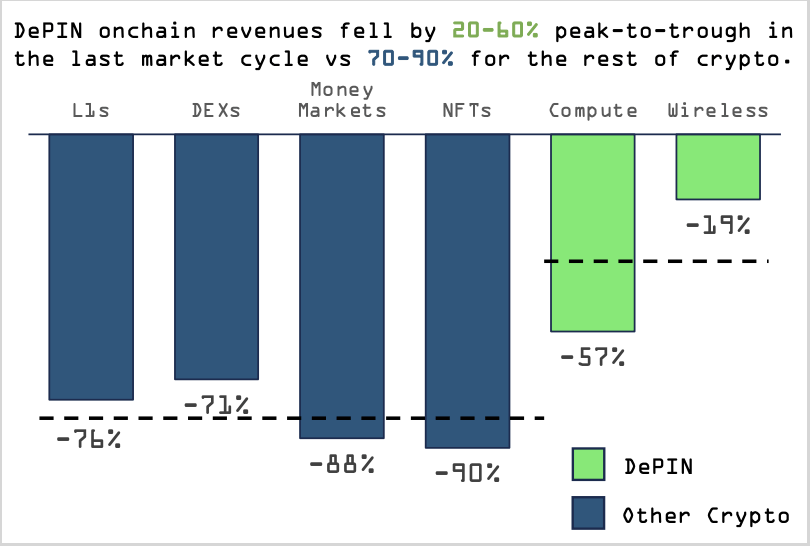
Looking ahead, DePIN’s potential expands further, with smart city management, decentralized IoT data markets, and renewable energy grids transforming global infrastructure. Public-private partnerships and investment opportunities could also bridge digital divides in underserved areas, fostering sustainable, community-led systems. The future of DePIN is vast and promising, with blockchain technology driving innovation.
However, many current projects fall short, offering only promises with limited user benefits and underwhelming rewards, which has slowed adoption. That’s why iFlux’s actively researching to tackle these challenges by developing a product that delivers tangible value and aligns with existing ecosystems. We’ll share updates soon on our progress.
Top notable DePIN projects
- Filecoin offers a decentralized storage solution, rewarding users with FIL tokens for sharing unused space, ensuring secure and reliable data management. Its peer-to-peer network stands out as a cost-effective alternative to traditional cloud services.
- Render Network taps into unused GPU power for 3D rendering, paying contributors with RNDR tokens. This P2P platform simplifies graphics processing, making it accessible and affordable for artists and developers.
- Helium builds a decentralized wireless network on Solana, letting users deploy hotspots to earn HNT tokens. With its Proof of Coverage mechanism, it provides secure, low-cost IoT connectivity, challenging conventional telecoms.
- Grass enables users to sell spare internet bandwidth, collecting web data for AI datasets and rewarding them with GRASS tokens. Its recent airdrop success highlights its growing appeal in the DePIN space.

- Livepeer provides a decentralized video streaming platform, allowing users to offer computing resources for LPT token rewards. It supports developers with efficient, blockchain-based video solutions, reducing reliance on centralized cloud services.
- Akash Network operates an open-source cloud computing marketplace, connecting providers and users with AKT tokens. Built on Cosmos SDK, it offers scalable, cost-effective computing power, empowering a decentralized tech ecosystem.
- Theta Network enhances video delivery through a decentralized network, rewarding bandwidth sharers with Theta tokens. Its P2P model ensures faster, cheaper streaming, positioning it as a strong contender against traditional CDNs.
With blockchain technology developing and adoption accelerating, DePIN projects bring countless investment opportunities for both institutional and individual investors. However, you should conduct thorough research and consider the risks involved before diving into this innovative space. We hope you now have a clear understanding of what is DePIN and how it can shape the future of decentralized infrastructure.
About iFlux Global
iFlux Global is an advanced cryptocurrency financial platform designed to democratize access to sophisticated digital asset services. The platform’s core mission centers on providing universal access to advanced financial services, enabling investors to manage and grow their cryptocurrency portfolios effectively.


